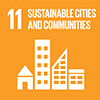June 2022 - You are accessing an old version of our website. The SDGs Voluntary Commitments have been migrated here: https://sdgs.un.org/partnerships
You will be redirected to the new Partnership Platform in 10 seconds.
June 2022 - You are accessing an old version of our website. The SDGs Voluntary Commitments have been migrated here: https://sdgs.un.org/partnerships
You will be redirected to the new Partnership Platform in 10 seconds.
“Kumamoto Farmer Hunters”, a community consist of over 100 farmers in Kumamoto Prefecture started initiatives to guard farms from wild bores, partnering with multi stakeholders. Unlike other cases in Japan, it is a business based solution. In most cases captured bores are buried and local public bodies have to pay costs for it. However, they mobilize resources by themselves by selling meat through e-commerce platform.
Population density of wildlife such as Japanese Sika Deer or Japanese wild boar are increasing. Now it is one of the major issues for local biodiversity and the biggest concern for people in Japanese rural area. In Kumamoto prefecture, densely populated wild boars affect to local forest ecosystem. It brings negative impact not only to biodiversity but also local communities. Conflicts between wild boars and local farmers became more frequent. It triggers farmers to abandon their farmland and dimnishes rural communities.
Members of “Kumamoto Farmer Hunters” consist of over 100 farmers are main player of this initiative. Also, other stakeholders such as local public bodies, academia, or private sectors such ad tech companies sharering visions are supporting this project. Key beneficiaries of this program is local community, notably farmers. Almost all of farmers are elderly people. Protecting farmland and their livelihood is not easy for such people.
In 2016, Kumamoto Farmer Hunters were established by 2 local young farmers, Masahito Miyagawa and Tatsuya Inaba, to tackle with issues caused by increasing wild bores. Although in the beginning, they had no skills or knowledge about wildlife management like other farmers, they created a community to learn how to manage wildlife by themselves. The community grows very fast and exceed 100 farmer members. They shared experience and knowledge with each other to improve countermeasures. This bottom-up approach moved local public bodies, academics, and tech company started to support with their expertise and technologies. For example, Rakuten, a Japanese tech company supported them by providing AI based solution to make wildlife monitoring easier and efficient. To make this initiative sustainable, from the beginning, they utilized e-commerce platform to mobilize resources. They utilized cloud funding to purchase facilities required for defend farmlands from wild boars, Also, with an E-commerce platform called “Rakuten Ichiba”, they sells boar meat and fruits saved by this initiatives, to their supporter and general consumer across Japan.
They contributes to keep local ecosystem healthy by culling overflown wild boars. Also, they contributes to revitalize local community. In 2018, they were awarded the Grand Prize (Minister of Agriculture, Forestry and Fisheries Award) by UNDB-J (Japan Committee for United Nations Decade on Biodiversity). Their initiatives are now well known to Japanese society.
Enabling Factors:
1. Members of Kumamoto Farmer Hunters are young local farmers are very good at utilizing technology, because some of them had experiences of e-commerce.
2. They closely communicate each other. Farmers community to increase their productivity and learning culture is a base of this new community for local wildlife management.
Constraints: Market share of wild bore meat is not enough large.
Unlike other wildlife management program in Japan, Kumamoto Farmer Hunters are business based initiative. They earn resources from across Japan by themselves, with e-commerce. These initiatives were regarded as public sector or non-profits’ role, but they changed it.
An Initiative by Kumamoto Farmer Hunters is a new, business based approach for biodiversity conservation and local communities’ sustainability. To make rural areas sustainable or to mobilize resource for that, these business and technology based approach are very effective.



 Start: 09 April, 2016
Start: 09 April, 2016 Completion: 15 February, 2016
Completion: 15 February, 2016